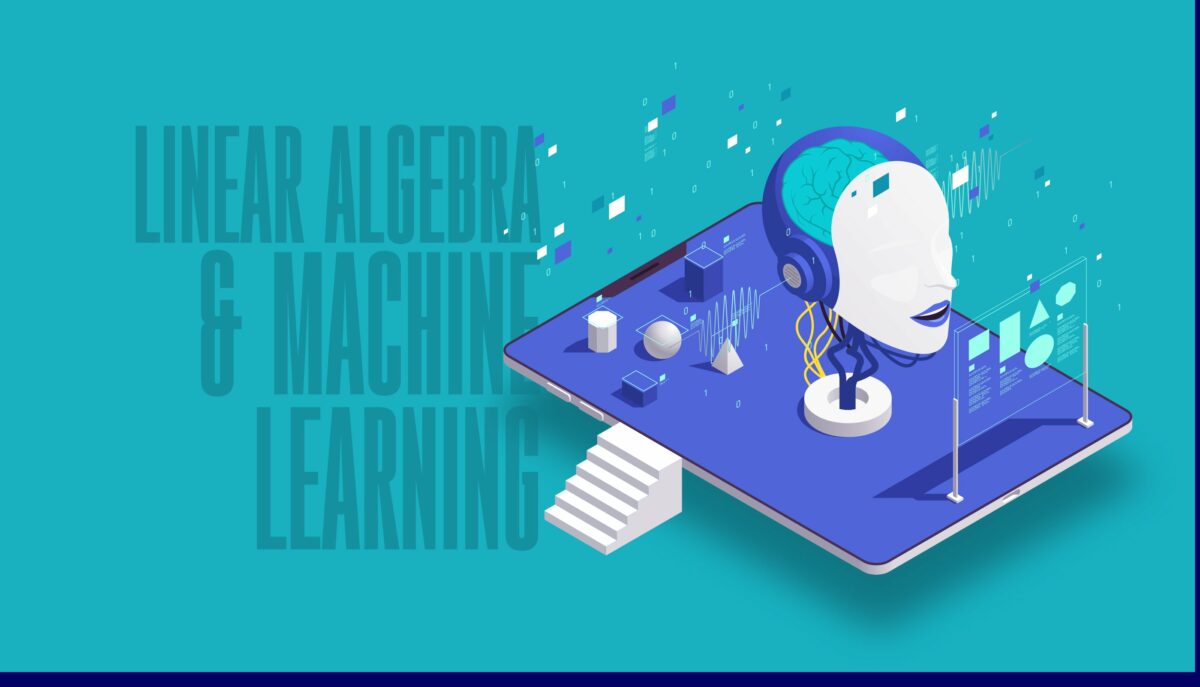Machine learning has grown exponentially over the past decade, transforming industries and everyday life. At the heart of many machine learning algorithms lies a fundamental branch of mathematics: linear algebra. Understanding the intersection of linear algebra and machine learning is crucial for developers and data scientists aiming to harness the full potential of AI technologies. This blog post explores how linear algebra underpins key machine learning concepts and techniques, providing a robust framework for algorithm development and data manipulation.

NEW Developer Nation survey is live! Participate, shape the trends in software development, and win big. Start here!
The Foundations of Linear Algebra
Linear algebra is the branch of mathematics concerning vector spaces and linear mappings between them. It includes the study of vectors, matrices, and systems of linear equations. These elements form the backbone of many computational techniques used in machine learning.
Vectors are fundamental objects in linear algebra, representing quantities that have both magnitude and direction. In machine learning, data points are often represented as vectors, where each element of the vector corresponds to a feature of the data point. For instance, a data point in a dataset of house prices might be represented by a vector whose elements include the size of the house, the number of bedrooms, and the year it was built.
Matrices are arrays of numbers arranged in rows and columns, used to represent and manipulate data. In machine learning, matrices are essential for organizing datasets and performing operations such as transformations and projections. For example, a dataset of multiple data points can be represented as a matrix, where each row corresponds to a data point and each column corresponds to a feature. If you’re looking for personalized assistance in understanding these concepts better, consider exploring math tutoring in Henderson.
Enhancing Data Preprocessing with Linear Algebra
Data preprocessing is a critical step in the machine learning pipeline, ensuring that raw data is transformed into a suitable format for model training. Linear algebra plays a pivotal role in several preprocessing techniques, making the data preparation process more efficient and effective.
Normalization and Standardization
Normalization: This technique rescales the features of a dataset so that they fall within a specific range, typically [0, 1]. Normalization ensures that no single feature dominates the learning process due to its scale. The process involves applying linear transformations to the data matrix, adjusting each element based on the minimum and maximum values of the corresponding feature.
Standardization: Standardization transforms data to have a mean of zero and a standard deviation of one. This technique is particularly useful when features have different units and scales. Standardization is achieved using matrix operations to subtract the mean and divide by the standard deviation for each feature, resulting in a standardized data matrix.
Dimensionality Reduction
Principal Component Analysis (PCA): PCA is a popular technique for reducing the number of features in a dataset while preserving as much variance as possible. This method uses eigenvalues and eigenvectors, key concepts in linear algebra, to identify the principal components that capture the most significant variations in the data. By projecting the data onto these principal components, PCA reduces the dimensionality of the dataset, making it more manageable and less prone to overfitting.
Feature Extraction and Transformation
Singular Value Decomposition (SVD): SVD decomposes a data matrix into three other matrices, highlighting the underlying structure of the data. This technique is particularly useful for tasks like noise reduction and feature extraction. By applying SVD, one can transform the original features into a new set of features that are more informative and less redundant.
Fourier Transform: In signal processing and time-series analysis, the Fourier transform converts data from the time domain to the frequency domain. This transformation helps in identifying patterns and trends that are not apparent in the original data. Linear algebra provides the framework for performing and understanding these transformations, facilitating more effective data preprocessing.
By leveraging these linear algebra techniques, data preprocessing becomes more robust, ensuring that the data fed into machine learning models is clean, standardized, and optimally structured. This enhances the model’s performance and accuracy, leading to more reliable predictions and insights.

Linear Algebra in Model Training
Linear algebra is also fundamental in the training phase of machine learning models. Many learning algorithms rely on solving systems of linear equations or optimizing linear functions.
In linear regression, one of the simplest and most widely used algorithms, the goal is to find the best-fitting line through a set of data points. This involves solving a system of linear equations to minimize the sum of squared differences between the predicted and actual values. The solution can be efficiently found using matrix operations such as matrix inversion and multiplication.
Neural networks, which power deep learning, also heavily depend on linear algebra. The layers in a neural network are essentially a series of linear transformations followed by non-linear activation functions. During the training process, backpropagation is used to update the weights of the network. This involves computing gradients, which are derived using matrix calculus, a subset of linear algebra.
Evaluating Models with Linear Algebra Techniques
Effective model evaluation is crucial for ensuring that machine learning algorithms perform well on new, unseen data. Linear algebra provides the tools necessary for thorough and accurate evaluation.
Mean Squared Error (MSE)
Calculation: MSE is a common metric used to evaluate the accuracy of regression models. It quantifies the average squared disparity between predicted and actual values. By representing predictions and actual values as vectors, MSE can be calculated using vector operations to find the difference, squaring each element, and averaging the results.
Interpretation: A lower MSE indicates a model with better predictive accuracy. Linear algebra simplifies this process, making it easy to implement and interpret.
Confusion Matrix
Structure: For classification problems, a confusion matrix provides a detailed breakdown of a model’s performance. It includes true positives, false positives, true negatives, and false negatives, organized in a matrix format.
Usage: Linear algebra operations facilitate the construction and analysis of confusion matrices, helping to compute derived metrics like precision, recall, and F1 score. These metrics offer insights into different aspects of model performance, such as accuracy and robustness.
Eigenvalues and Eigenvectors
Principal Component Analysis (PCA): In evaluating models, PCA can be used to understand feature importance and variability. Eigenvalues indicate the amount of variance captured by each principal component, while eigenvectors define the directions of these components. This analysis helps in identifying the most significant features contributing to model predictions.
By incorporating these linear algebra-based techniques, model evaluation becomes more comprehensive and insightful, ensuring the development of robust and reliable machine learning systems.
Advanced Applications of Linear Algebra in Machine Learning
Beyond the basics, linear algebra enables more advanced machine learning applications. Singular Value Decomposition (SVD) is a powerful linear algebra technique used in recommendation systems and latent semantic analysis. SVD decomposes a matrix into three other matrices, revealing the underlying structure of the data.
Another advanced application is in the field of convolutional neural networks (CNNs), which are used for image recognition and processing. The convolution operations performed in CNNs are fundamentally matrix multiplications, where filters (small matrices) are applied to input data to extract features.
Conclusion
The intersection of linear algebra and machine learning is both profound and essential. Linear algebra provides the mathematical foundation for many machine learning algorithms and techniques, from data preprocessing and model training to evaluation and advanced applications. By mastering linear algebra, developers and data scientists can gain deeper insights into how machine learning models work and how to optimize them for better performance. As the field of machine learning continues to evolve, the role of linear algebra will remain pivotal, driving innovation and enabling the development of more sophisticated AI systems.
NEW Developer Nation survey is live! Participate, shape the trends in software development, and win big. Start here!












